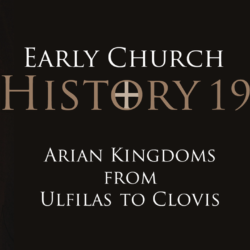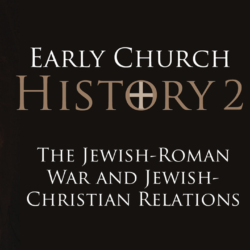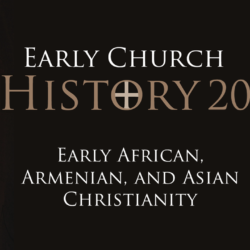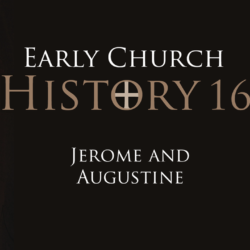Zooming out, this episode casts a wide net to summarize how the movement started by Luther, Zwingli, and Calvin affected Europe over the next century. We’ll see how the Reformation took root in Germany, Scandinavia, and the Netherlands while simultaneously failing to find fertile ground in France, especially among those in power. Lastly, we’ll consider the Thirty Year’s War (1618-1648) and how this brutal conflict fundamentally changed the way religion and politics related henceforth.
This is lecture 8 of a history of Christianity class called Five Hundred: From Martin Luther to Joel Osteen.
All the notes are available here as a pdf.
—— Notes ——
Germany
- Philipp Melanchthon (1497-1560): systematic theologian of Lutheran movement
- 1521 – Diet of Worms: edict outlawed Luther and followers
- 1526 – Diet of Speyer suspended the edict of Worms
- 1529 – Diet of Speyer re-enacted the edict of Worms
- 1530 – Diet of Augsburg
- Lutherans presented Augsburg Confession[1] (written by Melanchthon)
- Johann Eck prepared a confutation against the Augsburg Confession
- Charles demanded Lutherans sign this refutation
- 1531 – Schmalkaldic League
- 1532 – Emperor called a truce at Nuremberg that lasted a decade
- 1546-7 – First Schmalkaldic War
- 1552 – Second Schmalkaldic War
- 1555 – Peace of Augsburg
- Cuius regio, eius religio: whose region, his religion
Scandinavia (Norway, Sweden, Denmark)
- All of Scandavia ultimately became Lutheran during the 16th
- Monarchs converted to the faith
- 1527 – Gustav Vasa (1496-1560), king of Sweden split with Rome
- King took possession of all church property
- Subjected clergy to civil law
- Declared all churches to preach “the pure Word of God”
Netherlands
- Anabaptist movement was popular
- Spanish government (Philip II) harshly persecuted Protestants in the Netherlands
- 1560s – Dutch Reformed Church dominated
France
- French Protestants were called Huguenots
- Francis I (r. 1515-1547) initially was tolerant, owing to humanist tendencies until 1534
- 1534: Affair of the Placards stirred Catholics against Protestants
- 1562-1698: French Wars of Religion were civil wars
“The parish pulpits of Paris taught hatred of heretics and suspicion of those—including the magistracy and monarchy—who allowed their continuing existence. Catholic preachers goaded people into a frenzy of fear and hatred of the religious and moral depravity of the ‘Deformed’ that would undermine royal efforts for toleration and produce deadly fruit. …For over the next 30 years Huguenots and Catholics murdered and assassinated each other with increasing barbarity.”[2]
- 1572: St. Bartholomew’s Day massacre
- Marriage between Marguerite of Valois and Henry of Navarre brought many prominent people into Paris
- August 24th King Charles IX (1550-1574) had gates of Paris locked
“The streets were covered with dead bodies, the rivers stained, the doors and gates of the palace bespattered with blood. Wagon loads of corpses, men, women, girls, even infants, were thrown into the Seine, while streams of blood ran in many quarters of the city…One little girl was bathed in the blood of her butchered father and mother, and threatened with the same fate if she ever became a Huguenot”[3]
-
- They slaughtered about 6,000 people in Paris and 20,000 total throughout France
- Henry IV (1553-1610), himself a Huguenot, became king with the words “Paris is worth a mass”
- 1598 – Edict of Nantes allowed for religious toleration
- 1685 – Edict of Fontainebleau issued by Louis XIV (1638-1715)
- revoked Edict of Nantes (toleration) and outlawed Protestantism
- 1787 – Edict of Versailles signed by Louis XVI (1754-1793)
- An edict of tolerance for Calvinists (Hugenots), Lutherans, and Jews
- Paved the way for the Declaration of the Rights of Man and of the Citizen in 1789
The Thirty Years’ War (1618-1648)
- 1617 – Emperor Matthias had his cousin, the Jesuit trained Ferdinand of Styria, elected king
- 1618 – Four Catholic lords came to Prague and were thrown out a 3rd story window
- 1619 – Bohemia rejected Ferdinand and declared their own king
- 1630 – Gustavus Adolphus of Sweden (r. 1611-1632) entered war to expand Swedish possessions around the Baltic
- Johann Georg of Saxony (r. 1611-1656) switched sides from emperor to Gustavus Adolphus, and by 1632 they pushed the emperor back.
- By 1635, they were ready to negotiate for peace, but then the French entered the war causing the war to drag on for 13 more years.
- Raison d’etat (reasons of state): The state’s survival is an end in itself.
- Effects of war
- Famine, plague, deforestation, devastation, between 1/3 and 1/2 of population died
- Some people stopped practicing religion at this time
- Peace of Westphalia (1648): Ended the 30 years war and had a lasting peace
- Innocent X called the treaty “null, void, invalid, iniquitous, unjust, damnable, reprobate, inane, empty of meaning and effect for all times.”
- States now act in their own interests, not in that of the pope or any other church.
- Legal recognition of Calvinism alongside Lutheranism and Roman Catholicism
- Everyone recognized peace of Augsburg of 1555
- Each prince determines religion of his own state (RC, Lutheran, Calvinist)
- Granted toleration for those who wanted to practice their faith in a principality of another faith during allotted hours in private
[1] Augsburg Confession (full text)
[2] Carter Lindberg, The European Reformations (Malden, MA: Blackwell Publishing, 2006), p. 290.
[3] Lindberg, p. 292.
—— Links ——
- See all the episodes of Five Hundred: From Martin Luther to Joel Osteen.
- The three main textbooks for this class include:
- The European Reformations by Carter Lindberg
- The Radical Reformation by George Williams
- Modern Church History by Tim Grass
- Check out these other Restitutio historical podcasts
- Intro music: “District Four” by Kevin MacLeod. Licensed under Creative Commons: By Attribution 3.0 License.






